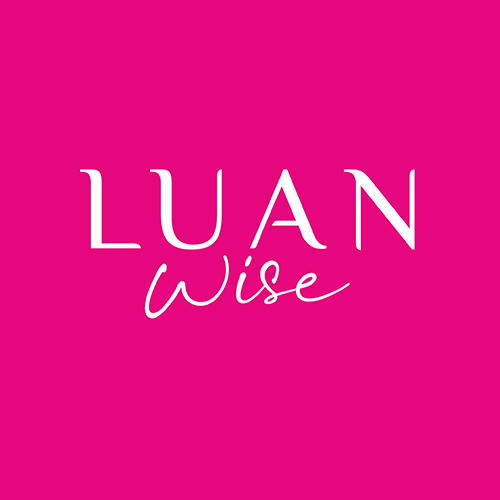This post is based on a keynote delivered at the Global Marketing Summit, October 2024.
The average social media user spends two hours 20 minutes a day scrolling, posting, and engaging with other users, across 6.7 different social media platforms (Source: Data Reportal, July 2024).
How can individuals and organisations effectively leverage this time to build deeper connections and loyalty among their audience?
The Evolution of Social Media Engagement
Since its launch in 2004, Facebook has transformed online interactions, most notably with the introduction of the ‘like’ button in 2009. This feature changed user engagement, allowing quick expressions of approval. Platforms like YouTube, LinkedIn, Instagram, and X (formerly Twitter) adopted similar features, emphasizing simple gestures to convey appreciation.
Engaging with a post serves two purposes: it acknowledges the author’s effort and adds value to your network when others see the content you engage with.
Likes for Awareness
Receiving a ‘like’ can provide a quick dopamine hit and social validation for your efforts. On platforms like Facebook, Instagram, and Twitter, the number of likes can boost content visibility, increasing the likelihood of appearing in users’ feeds. However, this type of engagement is often superficial—a mere click of a button.
When users see that a post has many likes, they are more likely to like it themselves, suggesting that people are inclined to mimic the behaviour of others, especially in ambiguous situations like deciding whether to engage with a post.
Platforms like Instagram and X (formerly Twitter) have tested hiding these metrics, partly to address mental health concerns like social comparison and anxiety over self-worth linked to low engagement. The intention was to see if users would engage more authentically—based on personal interest rather than social validation. Initial results have been mixed; some users reported feeling less pressure, while others missed the feedback loop of visible likes, which can be motivating.
Passive Vs Active Engagements
A study in the Journal of Consumer Research (Valck et al., 2009) found that while likes and shares can enhance brand awareness, they often fail to foster meaningful customer relationships. Passive actions like ‘likes’ require little investment, while active engagements—comments, direct messages, and shares with commentary—correlate more strongly with brand loyalty (Lemon and Verhoef, 2016).
Active engagement indicates a deeper investment in the brand, suggesting a more committed relationship likely to translate into lasting loyalty (Hollebeek et al., 2014). Meaningful interactions create a sense of community and trust that passive engagement cannot achieve.
The Case for Meaningful Metrics
Marketers often highlight engagement data—likes, shares, and comments—when discussing social media performance. While these metrics are easily digestible for senior leadership, they primarily reflect tactical execution rather than strategic impact. Engagement alone doesn’t connect to broader goals like brand growth, market positioning, or revenue generation. For boardroom discussions, it’s vital to focus on how social media drives high-level outcomes.
Focus areas for meaningful metrics include:
- Engagement Rates: Present engagement as a percentage for benchmarking. This can be calculated using either follower numbers or impressions, though follower numbers are often more useful for competitive analysis.
- Sentiment: Assess how your audience feels about your posts. Are reactions positive, neutral, or negative? While engagement is one aspect, sentiment provides deeper insights into your audience’s emotional responses. Positive engagement can indicate brand affinity, while negative sentiment may reveal concerns. Measuring sentiment helps brands understand relationship quality beyond mere interaction counts.
- Conversion: Does your social content drive real-world actions, such as purchases or sign-ups? For social media to support business activities, the content should inspire viewers to know, think, feel, or do something as a result.
Trust: The Foundation of Sustainable Success
Edelman’s Trust Barometer reports that 81% of consumers say trust is a ‘deal breaker or a deciding factor’ when considering a purchase
In The Long and the Short of It, Binet and Field illustrate that effective marketing balances short-term activation with long-term brand building, recommending approximately 60% of efforts focus on brand building. The same principle applies to social media.
Sustainable success requires a long-term focus on building trust and loyalty, going beyond passive ‘likes.’ Short-term activities should complement consistent brand building through authentic content that emotionally connects with audiences.
When trust is established, you contribute to what Stephen R. Covey calls the ‘Emotional Bank Account.’ This metaphor represents the level of trust in any relationship, built upon or depleted based on interactions. Over time, building this account strengthens brand resilience, making it a critical asset. If issues arise or a crisis occurs, customers may be more inclined to forgive the brand, relying on the established trust.
Resolving customer service issues can significantly enhance loyalty, as highlighted in the Harvard Business Review article How Customer Service Can Turn Angry Customers Into Loyal Ones. When customers experience a service failure but then receive effective recovery, they often become more loyal than those who never faced any issues. Quick and decisive responses to complaints are crucial; they not only address the immediate problem but also strengthen the customer relationship in the long run.
The Role of Social Media in Building Trust
So, how can social media help in building trust? The answer lies in authentic storytelling.
Engaging narratives allow brands to share their values, mission, and vision, creating a more personal connection with their audience.
Dove’s Real Beauty campaign connects with consumers by showcasing real, diverse women rather than traditional models. This consistent storytelling approach challenges beauty stereotypes and resonates with those seeking brands that value honesty and inclusivity.
Another compelling example is Patagonia, which shares stories about environmental activism and sustainable practices. By highlighting individuals and communities dedicated to protecting the planet, Patagonia aligns itself with a purpose-driven narrative that deeply connects with eco-conscious consumers.
Leveraging user-generated content (UGC) can further enhance trust. When customers share their genuine experiences, it fosters a sense of community and authenticity, reinforcing the emotional connection and encouraging others to engage with the brand.
An excellent example of supporting UGC is Spotify Wrapped, an annual event where users receive personalised insights into their listening habits. Users naturally share their summaries on social media, sparking discussions and recommendations. This user-generated buzz fosters a sense of community among Spotify users and serves as free promotion for the platform. In 2023, over 225 million users engaged with Spotify Wrapped.
The Role of Communities
Another social media feature key to supporting meaningful engagement, authenticity, and trust is the role of communities.
Lucy Hall, Founder of Digital Women, highlights, “People often use the word ‘community,’ but what they really have is an audience. A community is not just people following someone or a brand. A community is about people coming together, whether many or few. It’s a group with shared interests, problems, or goals, fostering a space where they all belong.”
Platforms like Facebook and LinkedIn offer groups for users to connect over shared interests, allowing both individuals and organisations to participate in existing communities or host their own. Active engagement within these groups not only strengthens bonds among members but also supports sustainable success by creating environments where collaboration and shared goals thrive. Genuine communities can only be built through meaningful engagement.
Facebook’s own mission to empower individuals to connect and create community aligns with the idea that nurturing relationships is important. Their latest redesign (announced October 2024) will include group updates as Groups now attract 1.8 billion users, and 25 million public groups are active every month
For more on the importance of digital communities for marketing, take a look at McKinsey’s Community Flywheel Methodology, here.
Top Tips for Sustainable Success on Social Media
- Prioritize Active Engagement: Focus on building genuine relationships through conversations, not just likes.
- Focus on Meaningful Metrics: Look beyond likes and followers. Track engagement rates, sentiment analysis, and conversion rates to gauge true success.
- Tell Compelling Stories: Use storytelling to resonate emotionally with your audience. Post consistently to keep your brand top of mind.
- Embrace User-Generated Content (UGC): Leverage UGC to foster community and promote your brand.
- Build Community: Foster connections within your audience by participating in or creating groups and encouraging peer-to-peer interactions.
References:
Binet, G., & Field, P. (2013). The long and short of it: Balancing short and long-term marketing strategies. IPA.
Covey, S. R. (2020). The 7 habits of highly effective people. Simon & Schuster.
Baker, T. (2018). How customer service can turn angry customers into loyal ones. Harvard Business Review. https://hbr.org/2018/01/how-customer-service-can-turn-angry-customers-into-loyal-ones
Lemon, K.N. and Verhoef, P.C. (2016) Understanding Customer Experience Throughout the Customer Journey. Journal of Marketing Research, Vol. 53, No. 4, pp. 70-96.
Hollebeek, L.D., Glynn, M.S., & Brodie, R.J. (2014). Consumer Brand Engagement in Social Media: Conceptualization, Scale Development, and Validation. Journal of Interactive Marketing, 28(2), 149–165.
de Valck, K., van Bruggen, Gerrit H., & Wierenga, B. (2009) Virtual Communities: A Marketing Perspective. Journal of Consumer Research, Vol. 36, No. 4, pp. 608-623.

